PPP -- Our ORC Historical TIME-LINE...

from
Archpriest Anthony Augustine
Centuries ago, this NYC urban jungle, all five boroughs of it, was once a bucolic countryside dotted with tall twirling wind sails. Prior to the mercantile occupation of the Dutch, the Native Americans lived in wigwams and/or communal "long houses" - so no conical "tepees" ever competed with this landscape of log cottages and whirligigs.
....Having sailed over from Holland, Dutch settlers would pump water for their fields and also crush their grains for flour with the large millstones rotated by the blades of these lofty windmills*. It was all so very idyllic here in what was then called "Nieuw Amsterdam". The amicable Native Americans would trade with them until the settlers rumbled with some "Indians"** and started a Great War here. Then we finally put them down in a choke hold, kicked most out and controlled the remainders.
Therefore, it's no coincidence that both the Corporate Seals of NYC (1625) and the NAORCC Diocese of New York (1916) BOTH include the sails of Dutch & English wind-mills depicted within them. They symbolize the history of our national culture and Church identity. Fittingly, the tallest of our new WTC Freedom Towers is designed to employ a windmill within an open grid frame. And the Atlantic Ocean off Jones Beach on Long Island, NY will soon have an off-shore farm of windmill blades generating our electricity.
Both entities, this Gotham City and this orthodox catholic Church, were founded by the Dutch long before the English took over here. Ever since. we've had several major demographic transitions which will shift even more towards the future. Like the hands of a clock, the progress of time seems to be measured by the rotations of windmill blades...
* Windmills have played a part in the historic and artistic, as well as economic, development of western civilization. Holland comes to mind first as the windmill capital of the world, but England's windmills were equally plentiful and important to the economy of the country since their development in Europe in the twelfth century. In 1400 A.D. there were 10,000 windmills in England, mostly in the South and the East where massive wheat fields are located. The windmill was designed to replace animal power in the grinding of grain--usually wheat or corn. A mill could grind up to 1,000 bushels of grain a week, six bushels per hour if the wind was steady. There is speculation that windmills may have existed in Europe at the time of the First Crusade in 1096 A.D.
** Some think that the word “Indians” was assigned to the Native Americans because Christopher Columbus was under the delusion that he landed on the fringe of Asia when seeking the New World. The term "Indian" was first coined by Christopher Columbus during his first journey in 1492. Columbus was under the impression that when he arrived in the Bahamas, he was in the East Indies. When Columbus encountered Arawaks, he referred to them as "Indians" because their skin color and hair texture was similar to that of Hindu people of Asia. In fact, the word is derived from in-dee-hay-nus which means “indigenous”. Native Americans regarded Columbus’ “discovery” as an invasion. That was followed by the conquistadors who stormed in here to build a great Spanish empire in the Western Hemisphere. Then came the English, French, and other Europeans who later carved out territory here for settlements. They spoke in terms of discovery because they were confident they represented a "higher" Christian civilization than that of the native heathen peoples. They viewed the natives as lost souls to be won for Christ; conveniently, these potential converts also could provide needed labor.
Concurrently, while these Northeastern American shores were being re-"discovered", claimed and subjected by our forbearers, our spiritual ancestors in the Netherlands -- where the ORCC was first established -- were having a tumultuous time like the Native Americans.... Consider: How many immigrants brought their miseries here to be passed along to those they looked down upon?
I consider the Vatican colonialists analogous to the usurper Dutch/English settlers. And the plight of our long established "Old Catholic" clergy in Holland were comparable to the indigenous "indians"** here. (Why do so many immigrants lose sight of why they escaped their native lands in the first place -- as they STILL do unto others at the bottom of the totem pole what was wrongfully done to them? And then they complain about this great country of ours. Yet they fail to realize that few flee from America -- unless they are absconding.) Saint Willibrord, the "Apostle to the Netherlands," who was an English missionary from Yorkshire, was consecrated Bishop by Pope Sergius I at Rome in A.D. 696. He was sent to missionize the pagan Friesians in the lowland countries of Belgium, Netherlands and Luxembourg. While under his tutelage, the city of Utrecht was raised to the dignity of a Diocese and his Archiepiscopal See. Saint Willibrord also established the Dutch dioceses of Deventer and Haarlem. Saint Boniface, the "Apostle of Germany," (+Bonifice was the Archbishop of Mainz, which continued until the French Revolution to be the Primatial See of Germany) was also a Bishop of Utrecht.
We also had to contend with Rome's intelligence unit which hatched their contrived political intrigues, fomented misinformation campaigns and kangaroo court martials overseas -- then induced a sacerdotal blockade or "Interdict" to be encircled around us. Those covert agents were the Jesuits, the new kids on the block, who interjected themselves into our turf just to "make their bones" (a name and reputation for themselves).
Here's how it all went down. Tight space constrains me here, so I'll elaborate in subsequent posts above. I'll start from the beginning with a broad overview (and as few details as possible -- just the basic who, what, when, where -- and perhaps why and how later) then give you a synopsis of each important development as it transpired. This is our historical TIME-LINE. Or, as LAPD Det. Sgt. Joe Friday (Jack Webb) used to say in "Dragnet" (very popular in this NYPD "Naked City) "Just the facts, Ma'am..."
Historical Synopsis:
The Old Roman Catholic Church, possessing a line of Holy Orders originating with our Lord Jesus Christ and held in common with the undivided Church of earlier centuries, holds its Apostolic Succession through the ancient See of Utrecht in Holland.
[This same Dutch See also provided a worthy occupant for the See of St. Peter in 1522 in the person of Pope Adrian VI, the last non-Italian Pope until 1978 — famous for opining that the Pope is NOT infallible. Two most able exponents of the religious life, Geerte Groote, who founded the Brothers of the Common Life, and Thomas a Kempis, who is credited with writing "The Imitation of Christ," were also from the Dutch Catholic Church.]
The NAORCC, corporately established within NYC in 1916, professes to be “part and parcel” of the Holy Roman Catholic Church since 1145. That’s when -- upon the petitions of The Holy Roman Emperor Conrad II and Bishop Heribert of Utrecht -- Pope Eugene III conceded to +Philip of Burgundy, 57th Bishop of Utrecht, the right of the Cathedral Chapter of the See of Utrecht, Holland to elect it’s own bishops in times of vacancy (who were then confirmed by the Pope) and granted him autonomy in the internal affairs of his Diocese.
In 1215 A.D. the Fourth Lateran Council confirmed that privilege.
In 1520 A.D. Pope Leo X issued the Papal Bull “Debitum Pastoralis” which granted the ORC See of Utrecht the right to adjudicate its own affairs without evocation to the Vatican Curia. (Three years before, Martin Luther, an ex-monk, established the Lutheran Church. That schism inspired the latter day Old Catholics of 1873.) This second Papal Decree conceded that the Archbishop of Utrecht — and his successors and clergy with the Faithful — would NEVER have their cause revoked by a tribunal — or under pretense from any apostolic letters — and that any such proceedings would be null and void if ever constituted.
[With this Papal Guarantee of independent status, the Church in the Netherlands survived the turbulence of the Reformation intact -- not having to go underground as others did. The Archbishop attained an informal agreement with civil government to function without interference of the reformists throughout this Protestant birth period. However, 14 years later, the Jesuit order was founded. They became our chief antagonists.]
In 1534, St. Ignatius Loyola and his companions came to the Rue des Martyrs in Paris to pay homage to Saint Denis and took vows that led to the creation of the Jesuit Order. It was here that these clerical troops first mobilized...
[It was the fifth century martyrdom of Saint Denis for preaching the Gospel that gave the half-mile uphill street its name. According to legend, Saint Denis miraculously picked up his head after he was beheaded and walked for miles before dying. During the Renaissance, the site of his beheading, on what is now the Rue Yvonne Le Tac, became a place of pilgrimage. This tiny chapel dedicated to Saint Denis, and rebuilt in the 19th century, can be visited on Friday afternoons and on Sundays by appointment. It's northeast of the Galeries Lafayette department store and southwest of the Basilica of Sacré-Coeur at Montmartre.]
The year is now 1592 A.D. Under the guise of being “counter-reformationists,” the jealous Jesuits crash the independent Archdiocese of Utrecht and foment serious trouble! They openly defy the Archbishop and the Pope and refuse to submit their religious obedience to them — only to their General. The Bishops and Dutch government fiercely resisted their political intrigues so the jealous Jesuits concocted a FALSE CHARGE against Archbishop Peter Codde — of doctrinal heterodoxy and of fostering the Jansenist “Heresy”.
Pope Innocent XII appointed a commission to investigate which rendered a complete and unconditional acquittal of the Archbishop of Utrecht. Instigated by the jealous Jesuits, (who resented the austere, intellectual and mature piety of the Brothers of the Common Life which differed radically from their sentimental kind) the ultramontanes in Rome — who were suddenly practicing absolute monarchy and demanding blind obedience — began to question the ancient rights of the independent ultrajectines in Utrecht. OUR “HOLY WAR” BEGINS!
[The Jesuits and their party held, as Rome contends to this day, that the Province of Utrecht and all its dioceses, as well as the ancient Chapter of Utrecht had ceased to exist at the time of the Reformation. They insisted that the Roman Catholic Church in the Dutch Republic was a mere mission, governed by a Vicar Apostolic who was appointed and removed by the Pope at his discretion and subject to the Congregation de Propaganda Fide, where the Jesuits were then all powerful.]
1628 A.D. — Incidentally, Michaelis Jones establishes the Dutch Reformed Church here in New York City.
1641 A.D. — +Philip Rovenius (consecrated Archbishop of Utrecht, November 8, 1620) instituted vernacular elements into the Tridentine Liturgy. The Vatican condemns Utrecht for doing so. Yet Rome follows suit by instituting its own vernacular liturgy in 1965 – and NEVER apologizes to the ORCC for its historical errors and flagrant hypocrisy.
In 1691 A.D. the Jesuits falsely accused Archbishop Peter Codde in Utrecht of favoring the so-called "Jansenist heresy". Cornelius Jansen created these errors within two of his works. As a result of these false allegations -- and although the lawful position of us ultrajectine Roman Catholics has been forcefully reasserted under the Formulary of 1823 and the decrees of the Provincial Synod of 1763 -- those members of the present day ORCC have been denied formal communion with Rome.
1697 A.D. — Dutch Catholics were still being accused of being "Jansenists". +Petrus Codde was then the Vicar General and he was officially censured by Rome. AN ALLEGED SCHISM BEGINS!
Since 1711 A.D., the ORCC has been deprived of all Papal discipline or direction when the Jesuits brought false charges of "heresy" against the Diocese of Utrecht to the Holy See which interdicted them.
(It behooves me to address and explain this ALLEGED HERESY within an explanatory blog ABOVE!)
On May 25, 1717, after an exhaustive study of almost two years, the entire body of theologians and canonists (102 doctors of theology and the whole faculty of canon law) at both the Theological Faculties of Paris and Louvain University verified the “Debitum Pastoralis” Papal grants of 1529 - which later became know as “The Leonine Privileges” - and declared the Church of Utrecht by “de jure” to be autonomous and "de facto" autocephallic.
1724 A.D.— After being isolated and vacant for many years under Vatican interdict, +Dominique Marie Varlet (a Franciscan Missionary Bishop and nephew of the Pope) consecrated +Cornelius Steenoven as Archbishop of Utrecht while passing through town on Church business..
In 1778 more than three hundred Roman Catholic Bishops sent Letters of Communion to the Church of Utrecht in spite of the Pope's condemnation because of their known devotion to the Roman Church. Canonists, even those of the Ultramontane party, condemned the Jesuits, the suspension of the Archbishop of Utrecht and publicly declared this rash act to be unjust, irregular and invalid.
1823 A.D. — Formulary: The ORCC has always used the same ritual and liturgy as the early Church practiced, abiding by the same doctrines and dogma. We follow the exact teachings given by the Apostles of Christ and continue through valid historical succession down to the present time. Known as the most ideal, loyal and staunch Catholics of their time, these followers of the ancient Church of Utrecht were classified and respected as the "aristocrats of Catholicism". They so clearly and without error, implicitly and faithfully followed all of the precepts laid down by the Apostles of the Christian Church founded by the Saints Peter and Paul.
1853 A.D. — Pope Pius IX established a rival RC hierarchy which brought a second Roman Catholic communion into Holland. To restore the original Church hierarchy our great-grand-fathers-in-Christ began calling themselves the "Old Roman Catholic Church". That name was then applied to the original Church of Utrecht and her canonical successors in order to distinguish it from the new establishment under Pius IX.
Yet more PRETENDERS would spring up just two decades later – the European “Old Catholics”… But their unorthodox praxis would soon expose them.
July 18, 1870 A.D. — Pope Pius IX promulgated decrees of Vatican Council I which abolished the principle of appeal to General Council and also declared the Pope to be infallible as a new binding Church dogma. Afterwards, dissent among Catholics in Germany, Austria and Switzerland over Papal Infallibility resulted in a general rebellion and the ones who decided to leave in favor of independence became known as "Old Catholics" because they sought to adhere to the original beliefs and practices of the Undivided Church of the post-Apostolic era.
(Utrecht had been in isolation for a hundred and fifty years. They looked with great hope to this First Vatican Council. The ORC’s were the only Catholic prelates in the world that were denied admission to this Council — and the ultrajectine position was suppressed. Thus, all their hopes were dashed to pieces. Ultramontanism ostensibly became obligatory for all Roman Catholics. In fact, at the instigation of those unfavorable to the cause of the Church of Holland, the Vatican Council abolished the principle of appeal to a general council of the Church.)
1873 A.D. — These European communities represented that their position was exactly that of the ultrajectines and appealed to the Bishops of the ORCC in Utrecht who consecrated their first bishops. The “Utrecht Union of OC Churches” thus began with the consecration at Rotterdam of the first Old Catholic Bishop by the ORC Bishop of Deventer [within the Province of Utrecht] — Father Joseph Hubert Reinkens, a Professor of Theology at Breslan. Autonomous national churches were established in Germany, Switzerland, Austria, Croatia, Poland and Czechoslovakia.
June 24th 1877 — Arnold Harris Mathew, born at Montpellier, Herault in France in 1852 and educated in Cheltenham, Bonn and Stuggart, is ordained a Roman Catholic priest.
September 24, 1889 — The Archbishop of Utrecht, Johannes Heykamp, convenes the First OC Conference, which led to the Declaration of Utrecht. It consisted of the five new Old Catholic bishops, the Archbishop of Utrecht, the Bishops of Haarlem and Deventer, and Bishops Reinken and Herzog, together with theologians representing the Dutch, German and Swiss Old Catholic Churches. The Conference reached complete agreement, and decided to take three steps to unite the churches.
1.] The five bishops agreed to establish a Bishops' Conference for mutual consultation. No church was to have priority or jurisdiction over any other; all the bishops agreed that they would not consecrate any bishop without the consent of all the Old Catholic bishops.
2.] An international Old Catholic Congress was to be held every two years.
3.] The five bishops issued a declaration of doctrinal principles by which all Old Catholic bishops and priests were to be bound. This document, known as the Declaration of Utrecht [Utrechtserklarung], is still the doctrinal basis of Old Catholicism and Old Roman Catholicism.
April 28, 1908 — Archbishop Gerard Gul (1847 to 1920), Old Roman Catholic Archbishop of Utrecht, assisted by Bishop van Thiel of Haarlem and Bishop Apit of Deventer, at the Cathedral Church of Saint Gertrude, consecrated +Arnold Harris Mathew, D.D. (1852 to 1919), a former RC priest, as the Old Roman Catholic Bishop for the Anglo-Catholics of Ireland and Great Britain.
[Bishop Mathew supported the orthodox opinion of the Archbishop of Utrecht [published in 1894] that Anglican orders were invalid, and so actively opposed the efforts of the Anglican Bishop of Gibraltar to negotiate inter-communion with the Dutch through dialogues with the ORC Bishop of Deventer. Bishop Mathew's unpopularity was increased by this action. When Utrecht made its final swing into the “Old Catholic” camp, by deleting the commemoration of the Roman Pontiff from the Missal, Bishop Mathew, solo in England, repudiated and denounced Utrecht.]
Dec. 29, 1910 — Archbishop Arnold Harris Mathew of Ireland and Great Britain issued his "Declaration of Autonomy and Independence” and seceded from the liberal reformist Utrecht Union of Churches federation. That brought his ORC Church Jurisdiction back in line with ancient tradition and severed all ties with the many and varied Old Catholic bodies in Europe which sprang up after 1870 and are essentially Protestant.
1911, Feast of St. Paul — +Arnold Harris Mathew elected Archbishop Metropolitan of Great Britain.
July, 1912 -- Although this writer already had ancestors here who fought with Brigadier General Casimir Pulaski’s First American Calvary in New Jersey and Brigadier General Tadeusz Kosciuszko during the Revolutionary War for Independence -- his grand-parents finally arrived from Poland at Ellis Island, NY/NJ.
November 21, 1912 — Archbishop Mathew advances Prince Rudolphe F.E. de Landas Berghes of the Austrian Royal House of Larraine-Brapant through minor and major orders and ordains him priest at age 39. He was born on November 1, 1873 of an aristocratic RC family in Naples, Italy — not far from the homes of his successor +Carmel H. Carfora and his Chicago pal and benefactor, the ORCC benefactor Al Capone. Prince de Landas Berghes was educated at the Univ. of Cambridge, Paris and Brussels, completing courses in law, Theology, Military Tactics, earning an LLB and Ph.D. He served as Captain in the Sudan on Lord Kitchner's staff and retired from the military with the rank of Lieutenant Colonel before entering seminary three years later.
June 29, 1913 — Archbishop Mathew consecrated him as missionary bishop to Scotland. Ordained priest on November 21, 1912, Prince Rudolphe F.E. de Landas Berghes soon becomes the forerunner of the Old Roman Catholic Church in the United States of America.
In 1913, the "Old Catholic" bishops declared (out of spite) that they did not recognize the ORCC Archbishop Mathew as one of their own.
In 1914 — Bishop Mathew appointed Bishop Rudolph Francis Edward Hamilton de Lorraine-Brabant, Prince de Landas Berghes, to establish the ministry of the ORCC in the United States. The Prince-Bishop also came to the United States with the intention of uniting the various Old Catholic bodies that sprung up in America over the prior 30 years. Due to national and ecclesiastical rivalries, this intention was never to be realized.
October 4, 1914 — Great Britain was at war with the Central Powers.
November 7, 1914 — On the Church Feast Day of St. Willibrord the Apostle who missionized Holland, Bishop de Landas Berghes brought Old Roman Catholicism to the U.S.A. to immigrant ethnic communities which embraced it into their National Church parishes. Before emigrating to these shores, he narrowly escaped British WWI interment as a subject of the Austro-Hungarian Empire. He briefly resided at Abp. Vilatte’s St. Dunstan's OC Monastery in Waukegan, Illinois which was shepherded by the Old Catholic Abbot + William Henry Francis Brothers, OSB
January 12, 1915 — Bishop de Landas Berghes introduced the ORCC line of succession into the Episcopal Church by serving with 12 other bishops that Tuesday as co-consecrator of +Hiram Richard Hulse, Bishop-Elect of Cuba at the new Cathedral of St. John the Divine in NYC. He was received with great cordiality by Bishop Greer of the Protestant Episcopal Church in New York and remained a guest for more than a year within his Diocese. The Rev. W. E. Bentley, an Episcopal minister, wrote in a current journal that, "The participation of Bishop de Landas in this event was of more than usual interest and importance, for it was the first time since the Reformation that a Bishop who is in communion with the Holy Eastern Orthodox Church and whose Orders are derived directly from Rome has taken part in an Anglican Consecration."
In 1916 — His Excellency established the North American Old Roman Catholic Church. (This is the Church for which I was tonsured in 1976 at age 22 and which I’m presently attached to.)
October 4, 1916 — Bishop Henry Carfora later joined Old Roman Catholic Bishop Francis R. de Landas Berghes de Rache who consecrated him (and +William Henry Francis Brothers the day before) sub-conditione. He succeeded Archbishop De Rache as the Second Primate of the North American Old Roman Catholic Church.
October 4, 1916 — Bishop de Landas Berghes consecrated Carmel Henry Carfora (1878 to 1958)
In 1918 — After attempting to coalesce the independent Catholic bodies into one national church and being ignored by the Polish National Catholic Church and the Old Catholics of Europe who considered the Prince-Bishop and other American Old Roman Catholics as "separatist jurisdictions", he became distressed that there would never be an united OC Church in America and decided that there was no future for the Old Catholic Church in America. In addition to the theological differences between the RC minded +Berghes and the OC minded +Vilatte, there was also ethnic rivalry between the Austrian Prince-Bishop and the French Abp. Vilatte - besides political enmity due to the WW I. +Vilatte contended that as the senior Old Catholic Bishop in America that the Prince-Bishop should defer to him — so Bishop de Landas Berghes resigned.
December 22, 1919 — At Saint Patrick's Cathedral, in NYC, in the presence of +Patrick Cardinal Hayes, the Prince-Bishop, after resigning as Metropolitan-Primate made submission to Rome with the understanding that his Episcopal character would be recognized and that he would be allowed to function as a Bishop. A condition of recognition was that he retire to a monastery and join an order, which he did.
In 1919 — +Carmel Henry Carfora succeeds him as the Second Archbishop Primate of the North American Old Roman Catholic Church.
March 13, 1920 — Archbishop de Landas Berghes retired to Villanova, Pennsylvania and there entered the RC Novitiate of the Order of Saint Augustine where he taught French at Villanova College for the academic year.
November 17, 1921 — Archbishop De Berghes reposes at age 47. In accordance with Canon Law, the Prince-Bishop was buried in the habit of the Order of Saint Augustine and buried in the Community cemetery at Villanova.
(1941 — +Richard Arthur Marchenna was consecrated by +Carfora as Bishop for Los Angeles, CA)
July 30, 1942 — Archbishop Carfora consecrated +Hubert Augustus Rogers (1887 to 1976) who served from 1946 to 1972 as the Old Roman Catholic Archbishop of New York. The ORCC Diocese of New York was erected that month with the late Archbishop H.A. Rogers as its First Ordinary.
In 1946 — Archbishop Carfora, the Second Primate of our Church, elevated Bishop H. A. Rogers to the rank of Archbishop and the Diocese of New York became an Archdiocese. The following year the ORCC formed an intercommunion with the African Orthodox Church.
In 1952 — when 25 parishes left the ORCC to enter the Orthodox Church, the ORC Archdiocese of New York reorganized while retaining seven of the twenty remaining parishes in the ORCC. That was the largest defection of clergy and parishes that the ORCC had ever experienced since its arrival in the United States.
In 1953 — Archbishop Carfora, the ORCC Primate, appointed Archbishop H. A. Rogers as his Coadjutor.
In 1956 — the ORCC Archdiocese of New York altered its title to the North American Old Roman Catholic Church.
In 1957 — the Primate replaced Abp. H. A. Rogers as Coadjutor with Archbishop Cyrus A. Starkey.
On January 11, 1958 — Archbishop Carfora reposed. At the following Synod, Archbishop H. A. Rogers was elected as the Third Primate of the ORCC.
After Archbishop Carfora reposed in 1958, the North American Old Roman Catholic Church branched into five autonomous, but cooperating ecclesial bodies. In 1963, Bishop Robert A. Burns established his Diocese in Chicago with the latest being the Old Roman Catholic Church in North America in 1975.) Still others emerged and falsely misidentified themselves as "ORC" — NOT by teachings or praxis, but only by virtue of the tactile Apostolic Succession of one or some of their co-consecrators.
In 1960, Bishop Starkey set up another ORCC jurisdiction in Chicago, taking two parishes with him. In 1963 only five parishes were left within the Archdiocese of New York. By 1966, new missions and parishes were being formed in New Jersey (this writer's first Archdiocese), Ohio and Connecticut.
On March 1, 1967 — A Roman Catholic Chancery Office investigation regarding an inquiry about the ORCC within the Roman Catholic Archdiocese of New York was completed. In a letter from the Very Rev. James A. Reynolds, Rector, St. Joseph's Seminary, Yonkers, N.Y., (in reply to the late Francis Cardinal Spellman through his secretary Rev. Msgr. James Rigney) the correspondence stated that as a result of months of exhaustive study they reached these conclusions:
1.] The Old Roman Catholics are (truly) Catholic in that they still hold the doctrines and dogmas universally accepted at the time of their “separation.”
2.] A diligent study shows NO sign of heresy in any official declaration of doctrine in the ORCC.
3.] The Orders and Sacraments of the Old Roman Catholics are valid since they obtained a hierarchy through +Dominic Marie Varlet, a valid Roman Catholic Bishop ... (therefore) any priest ordained by an Old Roman Catholic Bishop would unquestionably be a true Catholic priest (like an Eastern Orthodox priest)..."
On September 21, 1969 — Archbishop Rogers consecrated +Edward Carleton Payne (born 1928) who in 1970 became Old Roman Catholic Archbishop of New England.
In 1967 — Negotiations in the United States between the RC Bishops' Commission chaired by John Cardinal Carberry and the ORCC Congregation of the Oblates of Saint Martin of Tours resulted in a formal accord recognizing that the differences between the two parties were administrative, not doctrinal, in character; sustaining the latter's position that essential unity had been maintained and membership in the Church safeguarded.
On Oct. 17, 1973, a Vatican publication from the Secretariat for Promoting Christian Unity*** affirmed the above local ruling:
*** "... Catholics may receive the three sacraments mentioned under certain conditions. ... The principal condition is that these sacraments can be received only from ministers in whose churches these sacraments are valid. These are the churches which have preserved the substance of the Eucharistic teaching, the sacrament of orders and apostolic succession … This would include all Eastern non-Catholic churches, the Old Roman Catholics, the Polish National Church, and some Old Catholics... Another requirement is that of need or spiritual advantage... This can be interpreted broadly in keeping with the canonical axiom, "Burdens are to be restricted; favors are to be multiplied." (Communication AAS 65 (1973) 616; CLD 8:471, No. 9.)
In the 1980’s, the late Archbishop James Rogers was invited and participated with the late John Cardinal O’Connor at a Caribbean Day Mass at St. Patrick’s Cathedral. He also enjoyed cordial interfaith relations with the late Bishop Mugavero, Roman Catholic Bishop of Brooklyn and Queens, NYC.
One of the last two priests ordained by the late NAORCC Archbishop Rogers and among the few surviving him is The Rev. Msgr. Roger Fawcett. With the longstanding knowledge and approval of the local RC Chancery Office, he celebrates his Tridentine Liturgy Masses and conducts his ORCC services for Christ the King ORCC Mission Parish within a Roman Catholic Church in midtown Manhattan. This writer concelebrates with and assists him there when the honor is extended.
In 1975 — The ORCC Archdiocese of New Jersey was canonically erected where this writer was tonsured the following year.
In 1980 — This writer transferred to the newly erected ORC Diocese of Paterson, N.J. until his new Church assignments relocated him in New York City in 1992.









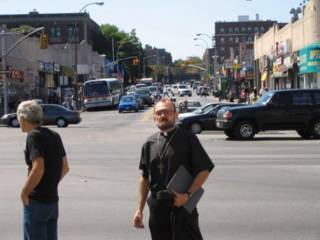







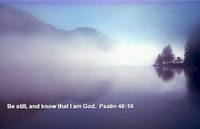




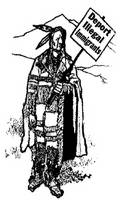
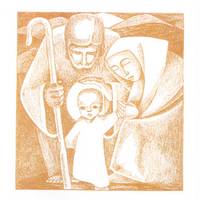


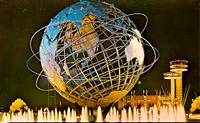
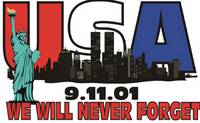































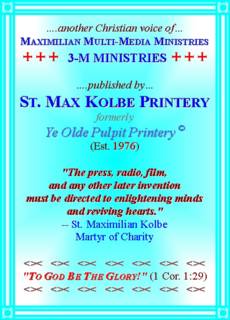




0 Comments:
Post a Comment
<< Home